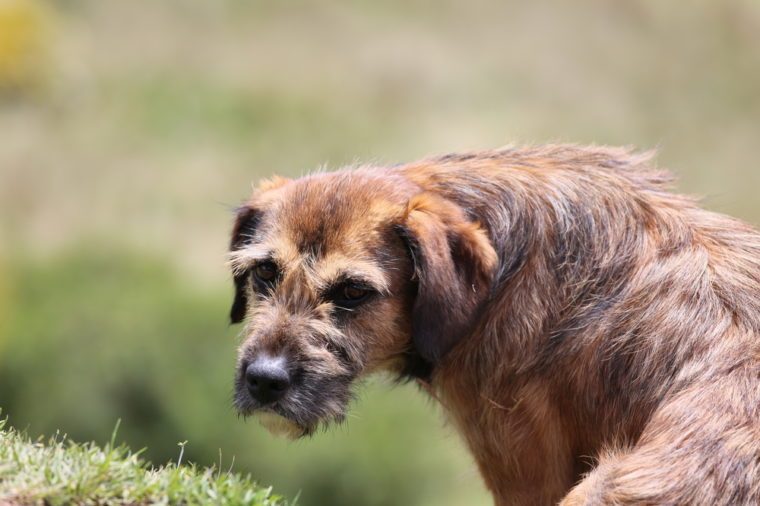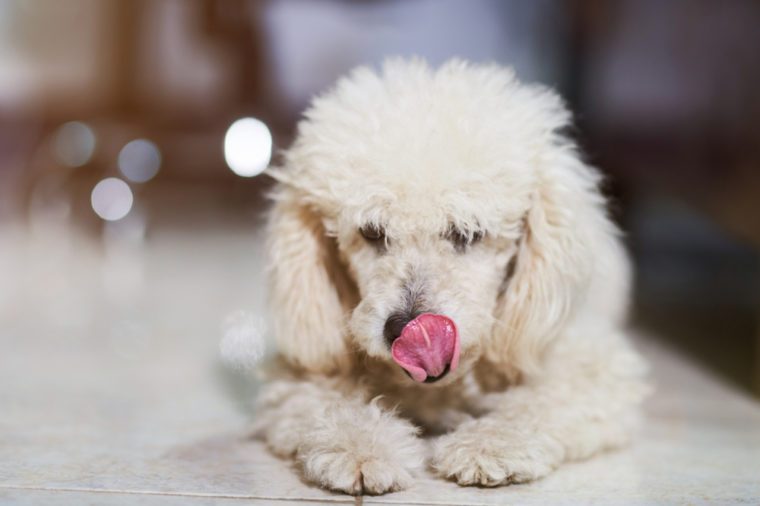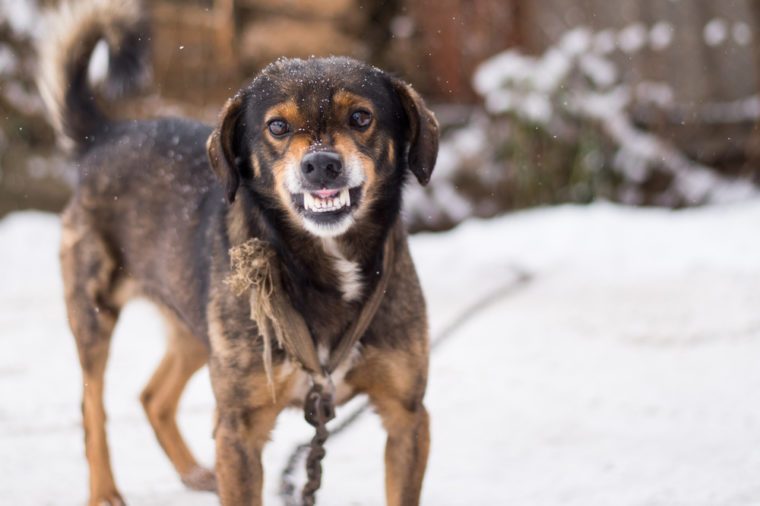Dog Peeing in the House? What to Know & What to Do
Is your dog peeing in the house, even though he's housetrained? Here’s what may be happening, and how to effectively handle the problem!
Is your dog peeing in the house? You’re not alone. Many dog have accidents even when they’re housetrained, and it can be incredibly frustrating.
But, however annoyed you might feel, a dog peeing in the house isn’t necessarily the thing to blame for this unwanted behavior. Current research shows that dogs aren’t being stubborn if they have an accident but rather responding to some kind of stress or change in their environment. It’s up to you to help alleviate that stress and teach your dog what you want him to do.
Is your dog peeing in the house? Maybe it’s scent marking
There are many reasons behind a dog peeing in the house, and one of the most common is no accident at all. Scent marking is different from a housetraining accident. Dogs who scent mark often leave urine in many different places around the home in small quantities. Toileting accidents tend to produce larger amounts of urine in fewer places.
Dogs are prompted to go where other dogs have eliminated, and ammonia can trigger this response. Since many household cleaners use this chemical, look for an enzymatic, natural cleaner.
A dog peeing in the house can signal a medical issue
If you can rule out scent marking, then a medical issue could be the reason behind a dog peeing in the house. A vet check is a great place to start and will help rule out many different medical conditions that contribute to housetraining problems; for example, gastrointestinal disease, urinary infections, renal failure or canine cognitive dysfunction in older pets.
Housetraining issues may be a response to change
If your dog is given a clean bill of health then ask yourself if anything significant has happened with your situation in the last few weeks or if your dog’s environment has recently changed. Did you move or did someone move in or out of your household? Did you get another pet or lose one, or did you install an electric fence or train your dog with an aversive training tool? Dogs are discerning creatures and are often affected by changes in their environment, including moving, changes in family life (human and animal), changes in routine (nutrition, exercise, enrichment) or the addition of aversive training tools.
When it comes to a dog peeing in the house, look for a pattern
The next thing to look at is your dog’s toileting habits. Is your dog peeing in the house during thunderstormsor when you leave? Does he eliminate when you come in from a walk or the yard? Does your dog sneak away or eliminate in the same place? Finding a pattern can help identify the reasons behind a dog peeing in the house.
For example, if your dog eliminates after coming in from a walk, don’t come inside immediately after your dog goes. This will teach your dog that eliminating signals the end of outdoor fun, and he will try to hold it!
Go back to basic housetraining
Stop a dog peeing in the house by going back to the basics of potty training dogs:
- active supervision
- careful management
- consistent routine
- a little bit of training
Rearranging or managing your dog’s environment is the best way to set him up for success and to keep your house pee and poop free! Actively supervising your dog is the key to successful potty training, but supervision means watching your dog all the time.
If you’re not able to actively supervise your dog and look for the “potty dance” (sniffing, circling, hunching, leg lifting), then he’ll need to be crated or confined to a small space where he won’t eliminate. Use leashes, baby gates, bathrooms and crates to confine your dog when you can’t supervise him. However, your dog must receive sufficient exercise and mental stimulation when not confined to avoid destructive behaviors and loneliness. Brain games, puzzles and play are a great place to start.
Get your dog on a good potty schedule
Start with a good bathroom schedule that goes back to basics, allowing access to outside areas every hour. Take your dog outside to eliminate after waking, eating, drinking excessively, playing, training, napping and if you see the potty dance. Feed your dog at set times so you can predict when he might need to go.
Limit water after a certain time in the evening if your dog is having accidents at night. Ice cubes can help your dog take water in at a slower pace while still quenching his thirst.
Gradually decrease the frequency of trips outside as your dog builds up control. Follow a schedule that builds up a predictable and reliable routine, and be patient and sensitive as your dog learns.
Keep this in mind: If your dog has had an accident and you weren’t there to catch him, it’s too late to redirect him. Never rub his nose in it. This will only delay his success and build up a negative association with you.
Being patient, with consistent guidance and support, will get your dog back on track and keep the dog accidents to a minimum.
Source: Dogster






















